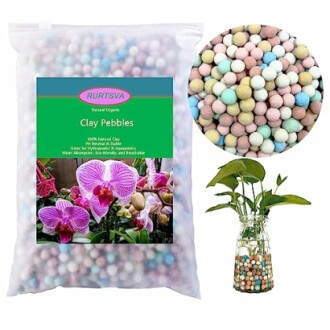
Choosing the Right Hydroponic Growing Medium
- Understanding different hydroponic growing media helps improve plant health and yield.
- Common options include rock wool, clay pebbles, coconut coir, and nutrient film technique.
- Each medium has its pros and cons, catering to various plants and growing conditions.
- Consider factors like water retention, aeration, and pH neutrality when selecting a medium.
- Experimenting with combinations of media can optimize growth in hydroponic gardens.
Getting started with hydroponic gardening can feel overwhelming, especially when it comes to selecting the right growing medium. The growing medium plays an essential role in your garden's success by providing a supportive environment for plant roots. Different media offer various benefits, so it’s vital to understand your options. This guide will help you choose the right hydroponic growing medium for your setup, evaluate the advantages and disadvantages of popular choices, and ensure your plants thrive.
What is Hydroponic Growing Medium?
Hydroponic growing medium is a non-soil material used to support plant growth in hydroponic systems. Its main functions are to anchor the roots and retain moisture while providing aeration and drainage. Because these media do not have the nutrients found in traditional soil, hydroponic gardeners must supply their plants with nutrient-rich water solutions.
Popular Hydroponic Growing Media Options
There are several types of growing media available, each with its unique characteristics. Below is a list of some popular options:
- Rock Wool
- Clay Pebbles
- Coconut Coir
- Vermiculite
- Pumice
- Hydroton
Comparison of Hydroponic Growing Media
| Growing Medium | Water Retention | Aeration | pH Level | Price |
|---|---|---|---|---|
| Rock Wool | High | Good | Neutral | Moderate |
| Clay Pebbles | Moderate | Excellent | Neutral | Moderate |
| Coconut Coir | High | Good | Neutral to Slightly Acidic | Low |
| Vermiculite | High | Fair | Neutral | Low |
| Pumice | Moderate | Excellent | Neutral | Moderate |
| Hydroton | Moderate | Excellent | Neutral | Moderate |
Pros and Cons of Hydroponic Growing Mediums
Pros
- Maximized growth rates due to optimal conditions
- Reduced pest issues compared to soil
- Conservation of water through efficient use
- Year-round growing potential
Cons
- Initial setup costs can be higher
- Requires careful monitoring of nutrient levels
- Potential for pollution if not managed properly
- Learning curve for beginners
Recommended Growing Media Products
12LBS Ceramsite Clay Pebbles for Orchid
These natural clay pebbles provide excellent drainage and aeration for a variety of plants, making them an essential addition to your hydroponic setup.
Explore NowNatural Organic Colorful Leca Balls 5LBS
These colorful clay pebbles are perfect for enhancing drainage and providing a unique look in your hydroponic setup.
Learn MoreConclusion
Choosing the right hydroponic growing medium is crucial for the success of your plants. Each medium has its unique strengths and weaknesses, which can fit different types of plants and growth conditions. Consider your specific needs and preferences for water retention, aeration, cost, and ease of use. With the right medium and care, your hydroponic garden can flourish like never before.
Further Reading
If you'd like to dive deeper into hydroponic gardening, check out these resources:



